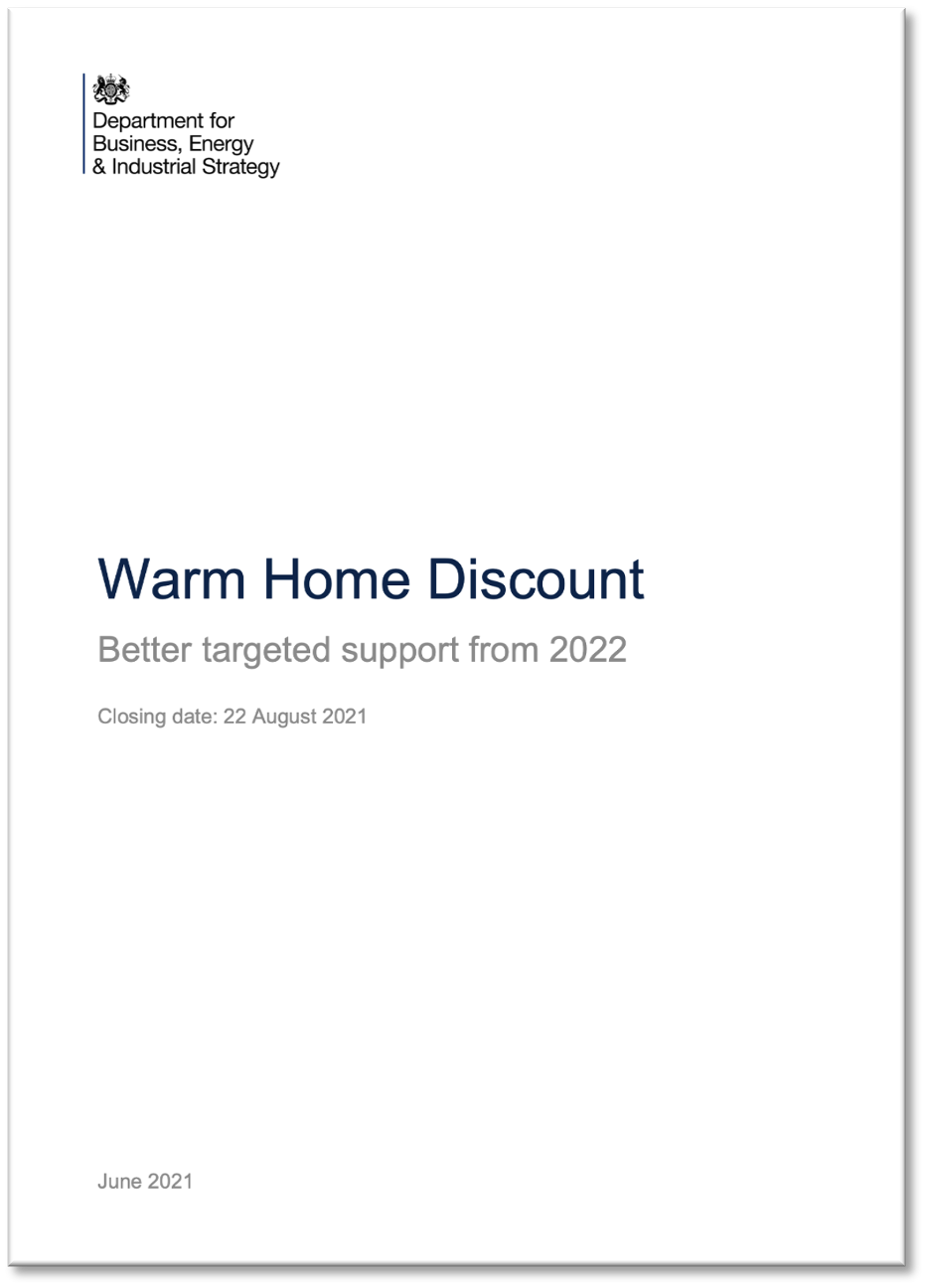Targeting and Policy Efficiency: Exploring the Intended Reform of the Warm Home Discount
Created on 06-06-2022 | Updated on 03-04-2023
With residential fuel prices on peak levels, governments are increasingly looking at targeted support for households at risk of fuel poverty. The Warm Home Discount has been in place in England and Wales since 2011 to improve affordability for specific groups. However, it received criticism for its low spending envelope, partially non-automated implementation, and lack of targeting. Therefore, government aims to reform the bill and presented a consultation document. This case study looks at the proposed changes, and places them in the context of the literature on target efficiency. It concludes that while the plans to automate the discount based on a prediction which low-income households live in inefficient dwellings are innovative, the responsible department has a narrow focus on vertical efficiency and either neglects or remains untransparent about the horizontal efficiency of the reform.
Instrument
Grant
Issued (year)
2021
Application period (years)
2022-2026
Scope
Country
Target group
Low-income households in energy inefficient dwellings
Housing tenure
-
Discipline
Public policy
Object of study
Instrument
Description
While gas prices in Europe have surged since the war in Ukraine started, price volatility was already high before the Russian invasion (Statista, 2022). Furthermore, it is to expected that the low-carbon transition will cause more temporary peaks in residential energy prices (Shi & Shen, 2021). This raises the importance for governments to mitigate the effects on households at risk of fuel poverty, most notably low-income households in poorly insulated homes. There are typically three policy angles (Simshauser, 2021): tariff design, retrofit programmes to improve energy efficiency, and targeted income support or subsidies. This case study explores an innovative proposal within the latter category.
Target efficiency of policy
In the last decades, governments have moved from universal to more targeted social welfare policies, aiming to ensure their redistributive character in times of austerity (Ortiz & Cummins, 2020). Targeted support is especially important in the context of residential energy affordability because generic measures could reduce the willingness of high-income homeowners to retrofit their homes, and therefore represent perverse incentives. However, targeted policies are by nature imperfect, as it requires balancing between ‘E-mistakes’ (also called ‘leakage’) in which compensation is given to non-targeted groups, and ‘F-mistakes’ (also called ‘under-coverage’) in which part of the targeted group is not given compensation (Cornia & Stewart, 1993). The former is reflected by ‘vertical target efficiency’, the extent to which beneficiaries need compensation, and the latter by ‘horizontal target efficiency’, the extent to which those deemed to need the compensation receive it (Weisbrod, 1972). Moreover, targeting could be problematic when it induces informational distortion, incentive distortion, stigmatisation or significant administrative losses (Sen, 1998).
Warm Home Discount Reform
In addition to existing income support policies, such as the Cold Weather Payment and the Winter Fuel Payment, the Brittish government introduced the Warm Home Discount (WHD) for England and Wales in 2011. It has offered rebates of up to £140 on annual electricity and gas bills for specific groups: households in receipt of Pension Credit Guarantee form the ‘core group’ and households on various working age benefits the ‘broader group’ (DECC, 2011). While the core group receives the rebate automatically, the broader group must apply for the scheme (with a first-come first-served basis and a total spending envelope of around £350 million) to their energy supplier. In practice, this means that a large share of the eligible group does not know about its entitlement or is refused by suppliers because their spending cap is already exceeded. In addition, the WHD has ever since its announcement been criticised for not reaching all fuel poor households (Consumer Focus, 2011).
In response to this criticism, the Department of Business, Energy and Industrial Strategy (BEIS) published a consultation document for reform of the WHD (BEIS, 2021). It wants to improve targeting of fuel poor households, automate all rebate payments, and reach more households by raising the spending envelope to £475 million. The proposal to improve and automate targeting is innovative in its current shape: BEIS wants to combine data from public and private organisations to identify households on low incomes living in substandard housing or dealing with high energy costs. It would therefore be the first social welfare benefit that is automatically provided based on a prediction of low energy efficiency, using specific housing characteristics such as floor area, property age and property type as proxies.
Narrow focus on vertical efficiency
However, in its substantiation of the reform, BEIS seems to interpret target efficiency simply as vertical efficiency, which leads to a neglect of horizontal efficiency effects.
BEIS modelling suggests that with the current scheme around 37% of WHD recipients are fuel poor, while the reform would increase this number to 47% of recipients. This reflects the vertical efficiency of the reform, as there would only be 53% ‘leakage’ to the non-targeted group rather than 63%. But arguably of greater importance is the horizontal efficiency, the question what proportion of all fuel poor households in England and Wales would be reached. This percentage remains unknown, leaving the public guessing how much ‘under-coverage’ there would be under the proposed reform. Given the stringent WHD eligibility criteria, my hypothesis would be that under-coverage is high. However, further research is needed to find out whether this is indeed the case, and to explore how setting a different threshold could improve the horizontal efficiency of a future reform.
Furthermore, BEIS could think about using a broader understanding of vertical efficiency, not just considering the incidence of fuel poverty, but also the severity on a household level. BEIS now only modelled the proportion of fuel poverty (P0) and not the poverty gap (P1). However, poverty is not a binary phenomenon and should thus not be treated as such. When Hills (2012) was commissioned by the Brittish government to enhance fuel poverty statistics, he introduced the ‘fuel poverty gap’ as an enrichment of the proportion, and envisioned it to be the main driver of policy design. BEIS’ approach in the consultation document demonstrates that this vision has not materialised. Further research could explore whether spending the same amount on a ‘percentage of the utility bill’ rather than a standard discount could lower the fuel poverty gap, as Simshauser (2021) showed for Australian targeted support mechanisms.
Alignment with project research areas
This case study is strongly connected to the Policy and Financing research area within RE-DWELL. As it encompasses the targeted support of households with low incomes in energy inefficient homes, ‘governance’ and ‘vulnerable groups’ are the two most prominent areas. As energy efficiency only predicted based on housing characteristics, this area is very relevant but slightly less compared to the former two. The WHD is not a procurement mechanism for the government, but still relates to the fuel procurement of private households. Furthermore, when more dwellings are retrofitted, the need for the WHD or other income support mechanisms would likely decrease.
While the term ‘energy poverty’ was not explicitly mentioned here, the topic lies precisely within RE-DWELL’s pillars. To illustrate this, O'Sullivan et al. (2017) describe how researching energy poverty can hardly be done from one single discipline. Appreciating the multifaceted complexity of societal problems like these requires ‘methodological pluralism’. Another illustration is the comparison between the first intended paper in this report and the attempt of Csizmady et al. (2021) to take the self-reporting of energy poverty beyond the binary divide between the energy poor and the non-poor. While these resemble two different methodologies, they aim for the same objective. The partnership with RE-DWELL academics, secondment partners and fellow doctoral candidates will thus contribute to this approach, as it aims to be a transdisciplinary research platform.
* This diagram is for illustrative purposes only based on the author’s interpretation of the above case study
Alignment with SDGs
As visualised in the radar chart attached, this case study can be linked to multiple SDGs. This is most notably the cae for Goal 1 ‘No Poverty’ and Goal 7 ‘Affordable and Clean Energy’, since the WHD aims to make fuel more affordable for low-income groups in inefficient dwellings and, hence, alleviate fuel poverty. Doing this could reduce inequality (Goal 10) within the English and Welsh society. Research has shown that fuel poverty causes both mental health problems as well as chronic physical disorders as health and respiratory diseases (Lawlor, 2001), which means that the WHD is also related to Goal 3 ‘Good Health and Well-being’. The frame ‘heating or eating’ is quite common across the UK and emphasises the relation of the WHD to Goal 2 ‘zero hunger’. Finally, while the WHD on itself would not lower carbon emissions, support policies could protect the most vulnerable residents when climate taxation policies increase the price of fossil fuels. Therefore, this case study has a modest link to Goals 13 ‘Climate Action’ and 12 ‘Sustainable Cities and Communities.
References
BEIS. (2021). Warm Home Discount: Better targeted support from 2022. Retrieved from https://assets.publishing.service.gov.uk/government/uploads/system/uploads/attachment_data/file/999412/warm-home-discount-reform.pdf
Consumer Focus. (2011). Reaching the fuel poor: Making the Warm Home Discount work. Retrieved from https://www.researchgate.net/publication/301523545_Reaching_the_fuel_poor_Making_the_Warm_Home_Discount_work
Cornia, G. A., & Stewart, F. (1993). Two Errors of Targeting. Journal of International Development, 5(5), 459-496. doi:doi.org/10.1002/jid.3380050503
Csizmady, A., Ferencz, Z., Kőszeghy, L., & Tóth, G. (2021). Beyond the Energy Poor/Non Energy Poor Divide: Energy Vulnerability and Mindsets on Energy Generation Modes in Hungary. Energies, 14(20). https://doi.org/10.3390/en14206487
DECC. (2011). Explanatory Memorandum to the Warm Home Discount Regulations. Retrieved from https://www.legislation.gov.uk/uksi/2011/1033/pdfs/uksiem_20111033_en.pdf
Hills, J. (2012). Getting the measure of fuel poverty: final report of the Fuel Poverty Review. Retrieved from http://eprints.lse.ac.uk/43153
Lawlor, D. A. (2001). The health consequences of fuel poverty: what should the role of primary care be? British Journal of General Practice, 467, 435–436.
Ortiz, I., & Cummins, M. (2020). The Austerity Decade 2010-20. Social Policy and Society, 20(1), 142-157. doi:10.1017/s1474746420000433
O'Sullivan, K. C., Howden-Chapman, P., Sim, D., Stanley, J., Rowan, R. L., Harris Clark, I. K., Morrison, L. L. A., & Waiopehu College Research, T. (2017, Dec). Cool? Young people investigate living in cold housing and fuel poverty. A mixed methods action research study. SSM Popul Health, 3, 66-74. https://doi.org/10.1016/j.ssmph.2016.12.006
Sen, A. (1998). The Political Economy of Targeting. Public Choice, 95(1/2), 177-200. doi:10.1023/a:1005023531490
Shi, X., & Shen, Y. (2021). Macroeconomic uncertainty and natural gas prices: Revisiting the Asian Premium. Energy Economics, 94. doi:10.1016/j.eneco.2020.105081
Simshauser, P. (2021). Vulnerable households and fuel poverty: Measuring the efficiency of policy targeting in Queensland. Energy Economics, 101. doi:10.1016/j.eneco.2021.105405
Statista. (2022). Dutch TTF gas futures at the beginning of each week. Retrieved from https://www.statista.com/statistics/1267202/weekly-dutch-ttf-gas-futures/
Weisbrod, B. A. (1972). Collective action and the distribution of income. Madison, WI: Institute for Research on Poverty, University of Wisconsin.
Related vocabulary
Just Transition
Area: Policy and financing
Created on 03-06-2022
Read more ->

